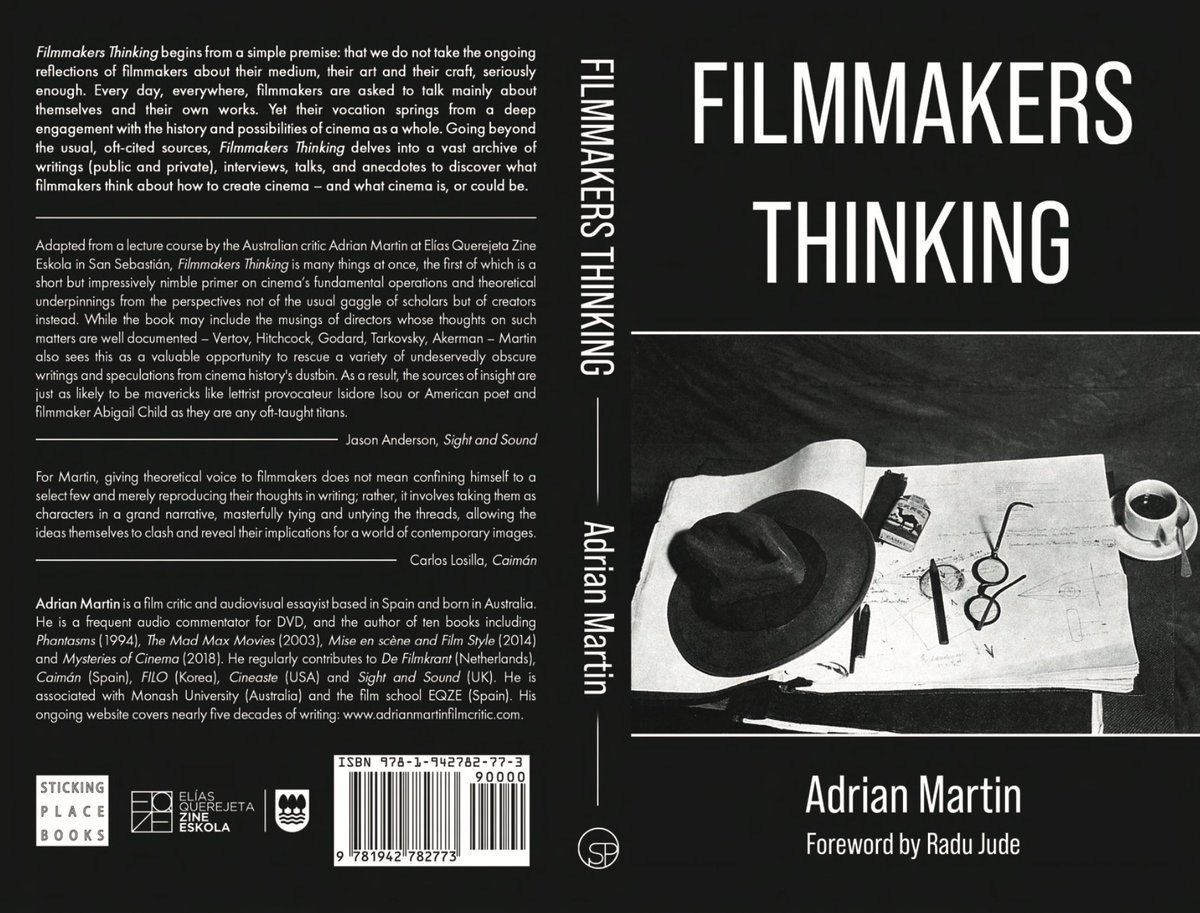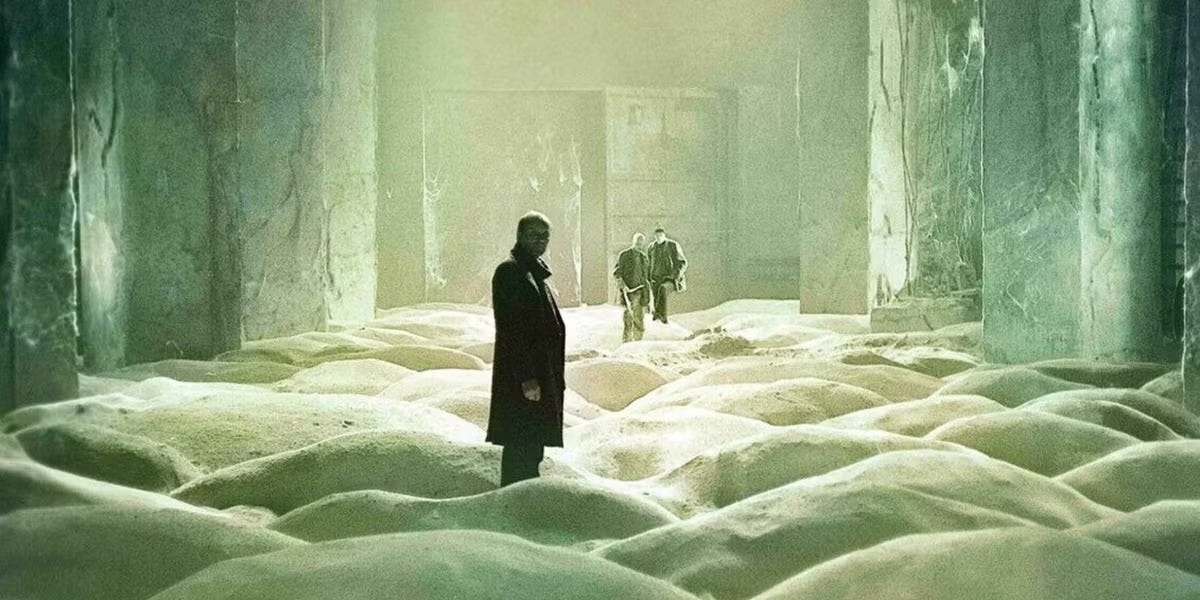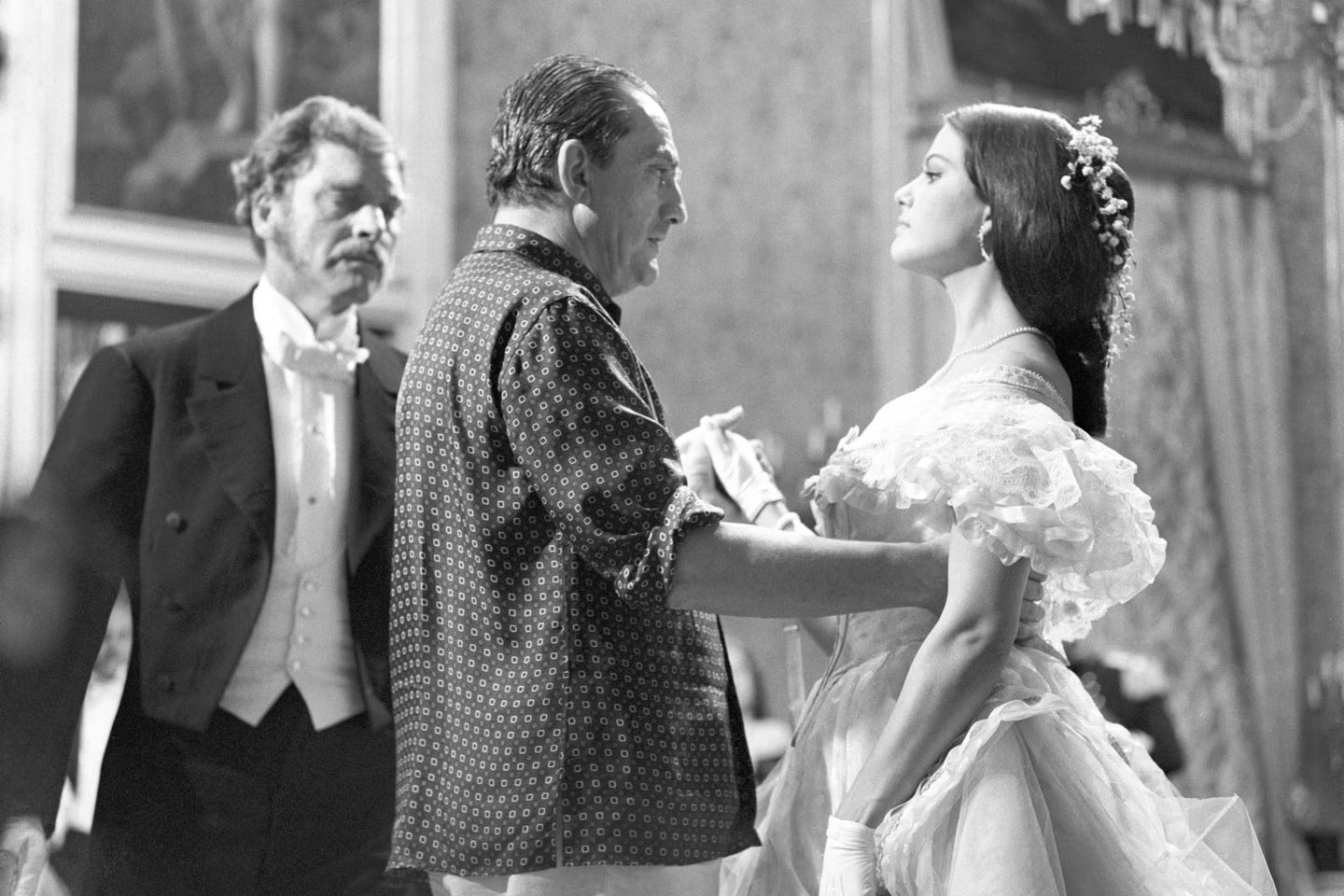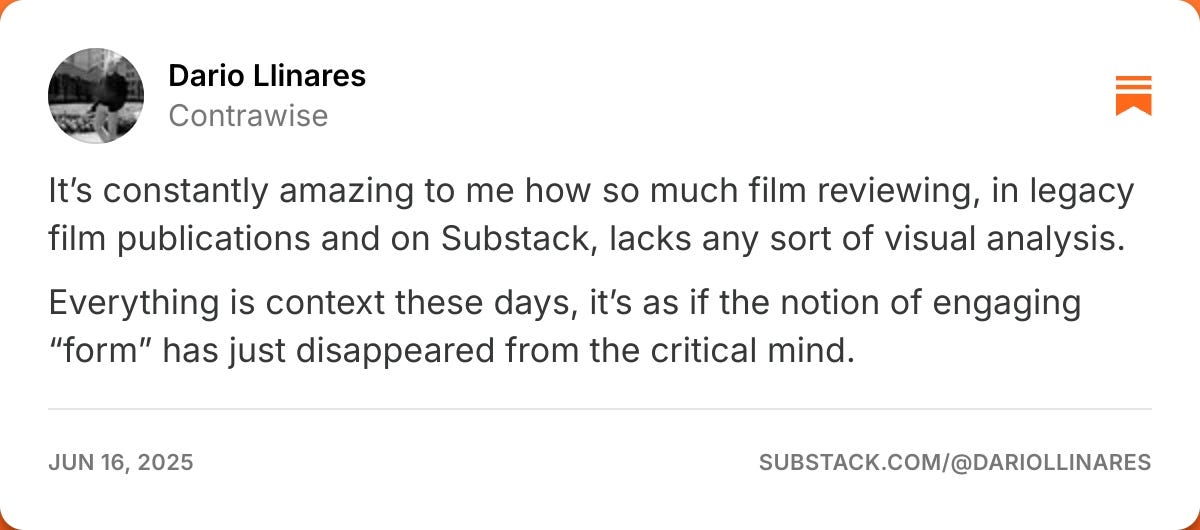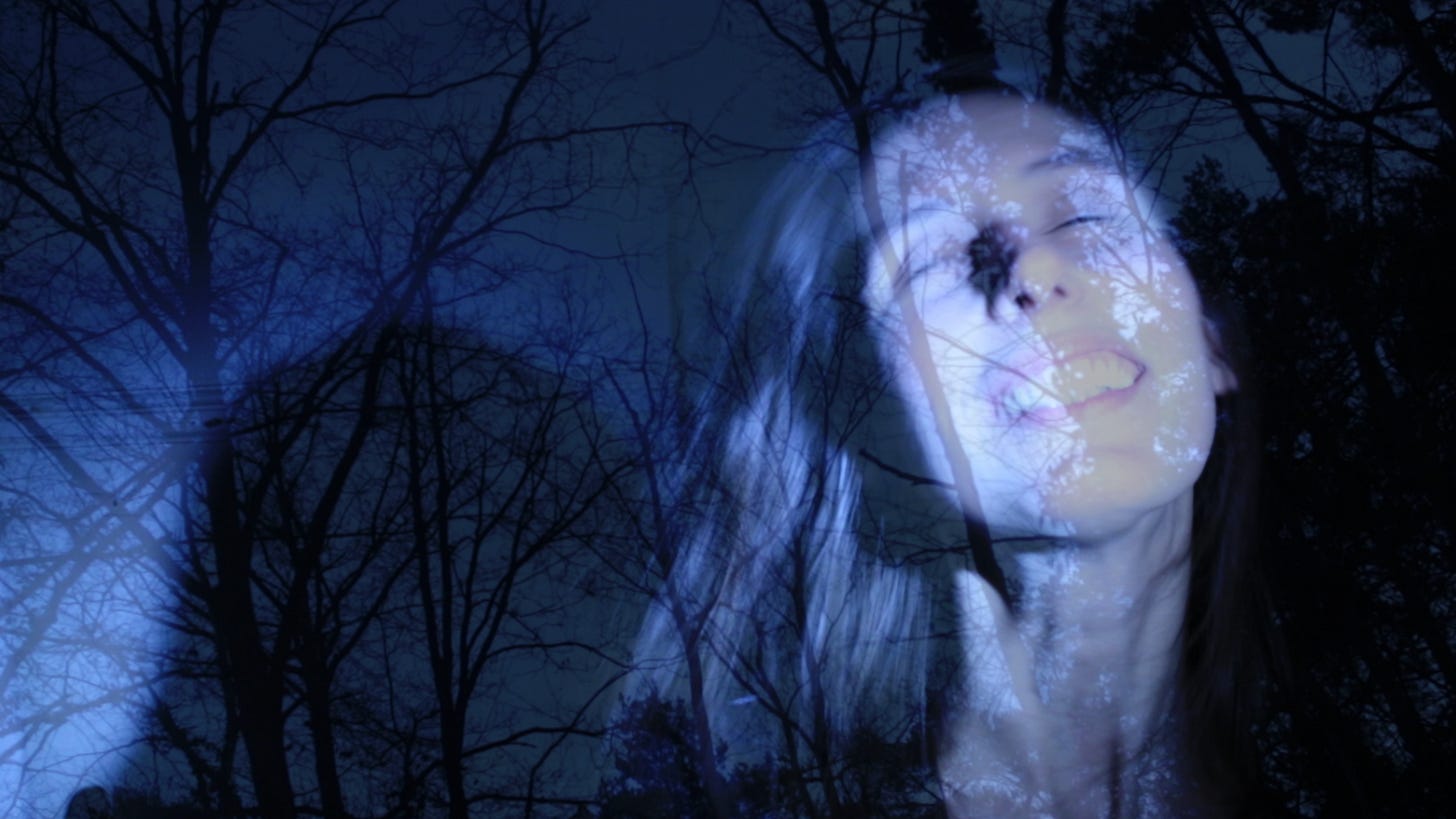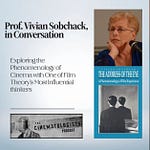Welcome Friends, both new and regular.
I’m genuinely moved that so many readers/watchers are coming back to the Substack on a regular basis.
A special thanks to new paying subscribers , , and for becoming paid subscribers. Such support really does give me encouragement for the viability of this project in the long term - if you’ve given your postal address, a postcard will be on its way very soon.
So, on to this episode.
I’ve engaged with Adrian Martin’s film criticism, for many years. I use the rather passive phrase “engaged with” consciously here, because his is one of those voices that has consistently traversed metiers of articulation: short and long form reviews, think pieces, a prolific output of video essays (with his partner Cristina Álvarez), DVD commentaries, podcasts, and film teaching (I’m probably missing further examples).
In many ways, my move onto Substack, and the integration of written, spoken and videographic forms which the platform allows in an integrated way, in inspired by the blue print that is Adrian’s mode of critical practice.
I was therefore honour when he reached out to me for a conversion delving his new book Filmmakers Thinking. My original intention was to structure this conversation in a similar vein to the previous Cinema Body/Cinema Mind, with its emphasis on the guest’s embodied cinematic identity
However, the book proved so rich and compelling that I chose to dedicate the entire episode to it - saving a conversation about Adrian’s cinematic life for another time.
In Filmmakers Thinking, Adrian Martin doesn’t simply return, with enigmatic abstraction, to the question What is cinema? Instead, he prises it apart through an extraordinary range of filmmakers’ writings, interviews, lectures, stray aphorisms, and improvisational performances of self-reflection. In preparing for the interview, I kept being pulled back to the different valences of “thinking” that the book animates. Thinking as poiesis, as making. Thinking as movement and association. Thinking as a body-in-time. And thinking as a feeling - of the frame, the moment, the obscure deployment of human passion, as director Philippe Grandrieux might put it.
I love this book for many reasons, but perhaps most of all because it can be used in so many different ways. If you're interested in the fundamentals of what cinema is, it's a primer for that enduring, art-philosophical question. If you're curious about directors reflecting on their own processes, it reads almost like a self-help guide for filmmakers. If you're looking to diversify your viewing vocabulary, it's a book that will introduce you to new work across a variety of contexts—and it expands what we tend to think of as the canon of film history. It's also a model for how to analyse artists through the rhetoric they use to explain their work (including the contradictory and often opaque language many adopt). And, perhaps most importantly, it’s just a great read about cinema.
In the interview, we talk about the beauty of the brevity of the chapters - it's the kind of book I imagine carrying in my bag when heading to the cinema, dipping into a chapter at random while having a drink in anticipation of the movie starting.
The premise of the book is deceptively simple: what happens when we treat filmmakers not just as makers of films but as theorists in their own right? Not merely the subject of critical interpretation, but subjects who themselves interpret—often with startling insight, poetic indulgence, and sometimes with maddening contradiction.
Martin recounts how the book emerged from a short teaching residency at the Spanish film school EQZE, where a course entitled Filmmakers Thinking was conceptualised not as a history of film theory, but as a speculative encounter with the ways directors themselves describe their practice. The idea - and Martin’s enthusiasm for it—is a subtle rebuke to the longstanding hierarchies that so often separate theory from practice. It’s something we bonded over in the conversation.
Why are Tarkovsky’s reflections on time or Akerman’s statements of intention so often treated as footnotes, rather than theory proper?
Adrian doesn’t just dissolve this opposition - he treats it as a category error. Perhaps it’s the result of the critic/artist antagonism that, through the education system, has been negatively extrapolated into a teacher/maker dichotomy.
The filmmakers he draws upon through book, are not mute artisans, nor a slippery self-mythologiser in need of academic decoding. They are, in his telling, intuitive philosophers of their medium - sometimes rigorous, sometimes improvisational, but always worth listening to on their own terms.
Maps, Metaphors, and the Method of Association
In one of the most resonant moments of the conversation, Martin shares his creative process: an empty sheet of paper, a central idea at its centre, and around it a constellation of thoughts, names, and fragments gathered serendipitously but also with the attentiveness of a detective. Lord only knows how many books and articles Adrian in order to collate all the quotations. Not to mention the youtube videos and internet rabbit holes he must have disappeared down. It’s a method, yes, but also a gesture of intuitive dedication as a practice.
This feels especially urgent now, in an era where criticism so often becomes instrumental - either “useful” (as in market-facing content curation) or performative (as in reaction-based posturing). Martin’s work resists both. It offers a different rhythm, a different ethos: one that is associative, digressive, and guided by instinct rather than agenda. He links this to a philosophy of teaching as a kind of performance art. An idea that struck a particularly tensile nerve with me.
It’s an alternative stance - perhaps even a radical one - at odds with both tribalist fandom and algorithmic conformity.
As we spoke, I kept returning to the image of cultural engagement as a river. I think I encountered it in Oliver Burkeman’s Four Thousand Weeks: you can’t grasp it all, but you can reach in, pull something out, hold it briefly, and then let it return to the flow.
If you enjoyed this post and think to yourself yeah, I’d by this guy a coffee if he was in my local café please consider doing that virtually. It really does help sustain my work:
The Rhetoric of the Cinema: How Filmmakers Speak
One of the joys of Filmmakers Thinking is how attentive it is to language. I don’t just mean cinematic language - although Adrian is a master at evoking the nuances of audiovisual form on the page - but the rhetoric filmmakers use when trying to articulate what they do. Chapter 3, for example, stages an encounter between metaphor systems: the film as machine (Pasolini), as river (Epstein), as ritual, as dream, as collision.
Martin isn’t merely cataloguing these metaphors; he’s treating them as philosophical positions, markers of aesthetic orientation. Does a filmmaker centre the specific of story (George Miller)? The Body on Screen (Visconti)? Rhythm (Hitchcock)? Or even rupture and the unconscious (Grandrieux)? Each position opens a different constellation of cinematic possibility - and a different path for the reader-viewer-thinker.
I found this attentiveness to the argot of directors invaluable and refreshing, especially in an age when even filmmakers themselves can be swallowed by the PR machine’s reduction of intention to tagline. Not to mention the fact that many film critics seem to have forgotten how to write about form with any complexity.
Martin asks something from us: not just to accept these statements at face value, but to read between the lines, to feel their historical weight and contextual irony. As he says, “Sometimes theories are for something and against something at the same time.” What’s left unsaid matters as much as the utterance itself.
We dedicated a good part of our conversation, inevitably to the temporal underpinning of film. Cinematic time is not just chronology; it’s shapes texture, controls mood, and give thickness to the experience. And no one crystallises this more powerfully than Tarkovsky, who for Martin represents the “purest film theorist” among directors. Not because of some dogmatic position, but because of the depth with which he reflects on temporality as the material substance of film.
Tarkovsky’s notion of the “imprinted block of time” - a long take whose temporal integrity is sacred. And yet Martin complicates this with montage, arguing that even the long take placed in a sequence is vital to its temporal effect.
Montage as arrangement of blocks - not just of shots but of times, moods, intensities. Echoing Radu Jude, who contributes the book’s foreword, Martin links this to the aesthetics of the essay film, the fractured narrative, the form that rejects tidy causality in favour of resonant collision.
There’s something gently radical here. At a moment when even the most “artful” films often obey the narrative structures of prestige TV, this reassertion of montage as poetic architecture feels like a needed reminder. That cinema is not a conveyor of story, but a medium of presence.
Not only this, the discussions of cinematic time, kept resonates with my recent interest in film viewing and feeling of time passing.
Sensation and the Cinema of the Body
Which leads back to a wonderful connection between the book and the raison d’être of this Substack: cinema as an embodied, sensuous experience. A question not just of mind, but of sensuous flesh. Watching a film is not a disembodied act of cognition, but a full-bodied event—an encounter with rhythm, affect, intensity. Light palpating the retina. Sound vibrating the chest.
I quote Philippe Grandrieux from the book—a filmmaker whose work I’m not at all familiar with:
“Cinema is made (above all) with the hands, with the skin, with the entire body, by fatigue, by breath, by the pulsations of the blood, the rhythm of the heart, by muscles. Body and sensation—that is the machine, its absolute power, its obsession. That is its becoming. Invented bodies, comical, grotesque, obscene, the improbable bodies of the stars and the monsters—and light, its palpitation, and the beating of the shots—and in us, fear, joy, hope, sadness, the obscure deployment of human passions.”
After reading this, and many other such quotes from directors both familiar and unknown to me, Filmmakers Thinking succeeds in most clear yet powerful aims: to inspire the watching of films.
There’s much more I could say - about the remarkable foreword by Radu Jude, whose own work exemplifies the politically alert bricolage Martin champions; about the undervaluing of filmmaker speech in film academia; about the excavation of "lost lectures," from McKendrick’s note cards to Tarkovsky’s improvised classroom homilies.
But perhaps it’s best to end with a personal note. This book—like the conversation it sparked—reminds me why I keep returning to film, not as content, escapism, or cultural capital, but as encounter. A place where language falters and sensation begins. A medium that, at its best, demands a kind of thinking that sits in the space between cognitive analysis and embodied surrender.
Martin writes with such clarity about all aspects of the cinematic world—the films, the filmmakers, the contexts of production. His work is rigorous and exploratory, laden with references yet light-footed, unafraid of the poetic, always able to trace a line between the formal, the philosophical, and the visceral.
Filmmakers Thinking offers us a luminous path—not toward an answer to “What is Cinema?” but into the thinking, watching, and feeling that the question demands.
Chapters
00:00 Navigating Pain and Creativity
03:05 The Genesis of a Book
05:56 Exploring Filmmakers' Thoughts
08:56 The Role of Serendipity in Creativity
11:56 The Value of Filmmakers' Voices
14:59 The Structure of Filmmakers Thinking
17:57 The Discontinuity of Filmmakers' Lives
21:09 The Importance of Statements of Intention
23:57 The Evolution of Filmmaking Discourse
27:03 The Future of Cinema and Filmmakers' Visions
39:26 The Influence of Claire Denis on Rivette's Work
40:39 Radu Jude: A Political Filmmaker's Perspective
41:54 The Creative Process: Inspiration and Collaboration
44:52 Metaphors in Filmmaking: Understanding Different Dialects
51:00 Defining Cinema: Perspectives from Visconti, Hitchcock, and Miller
58:23 Philippe Grandrieux: Cinema as Sensation and Chaos
01:06:02 Against the Grain: Surrealism and the Absurd in Cinema
01:11:24 Tarkovsky: The Texture of Time in Film
01:15:51 Reflections on Filmmaking: Insights from Marco Bellocchio
For paid subscribers, you get access to the complete video podcast above. In addition, below I have list further 10 examples of Adrian work with links - a sort of where to start with his criticism.
If you enjoyed this post please consider because a paid subscriber. You get full access to all the resources and you will be supporting truly independent, authentic media.
Where to Start with Adrian Martin:
Listen to this episode with a 7-day free trial
Subscribe to Contrawise to listen to this post and get 7 days of free access to the full post archives.






